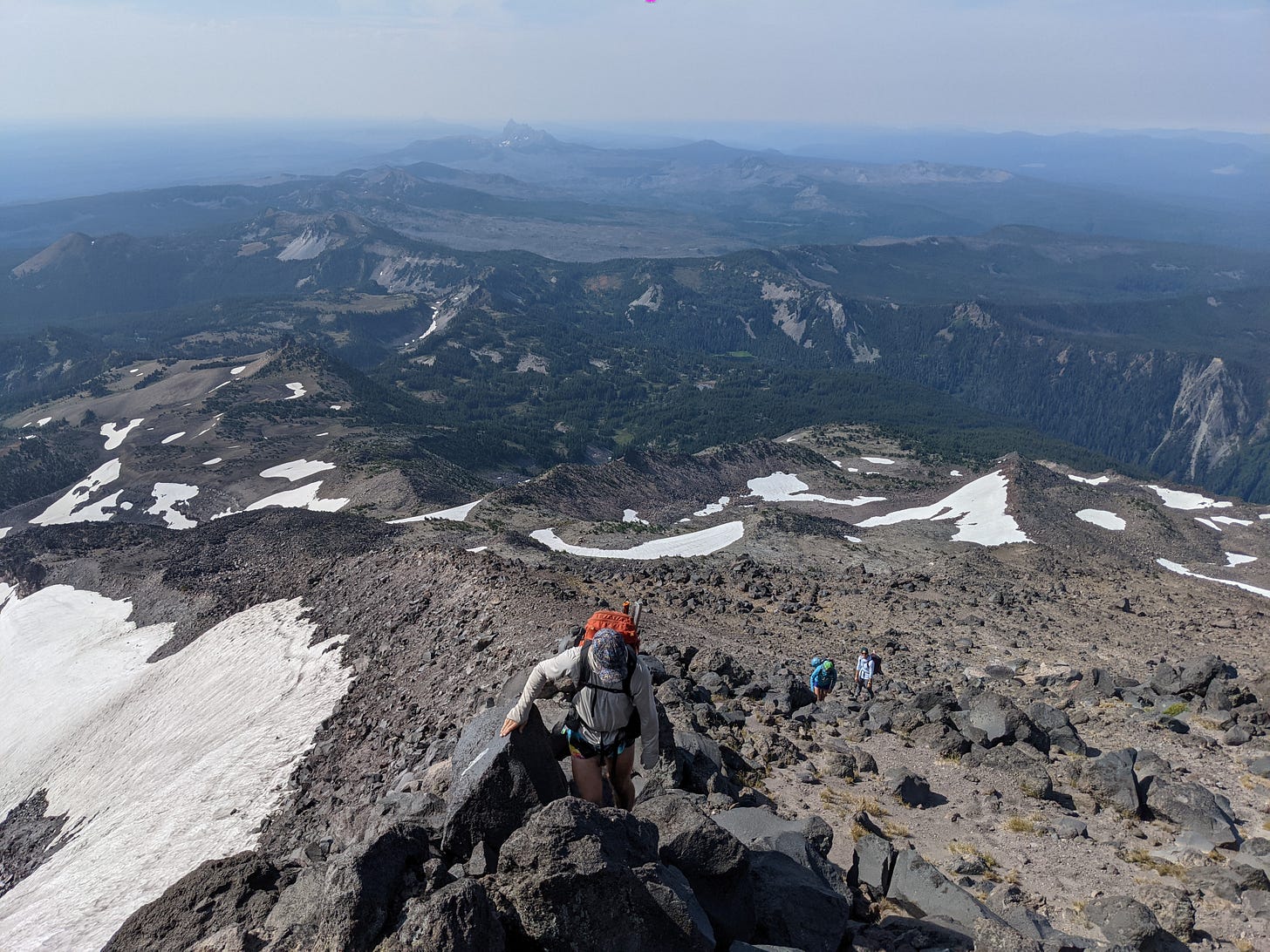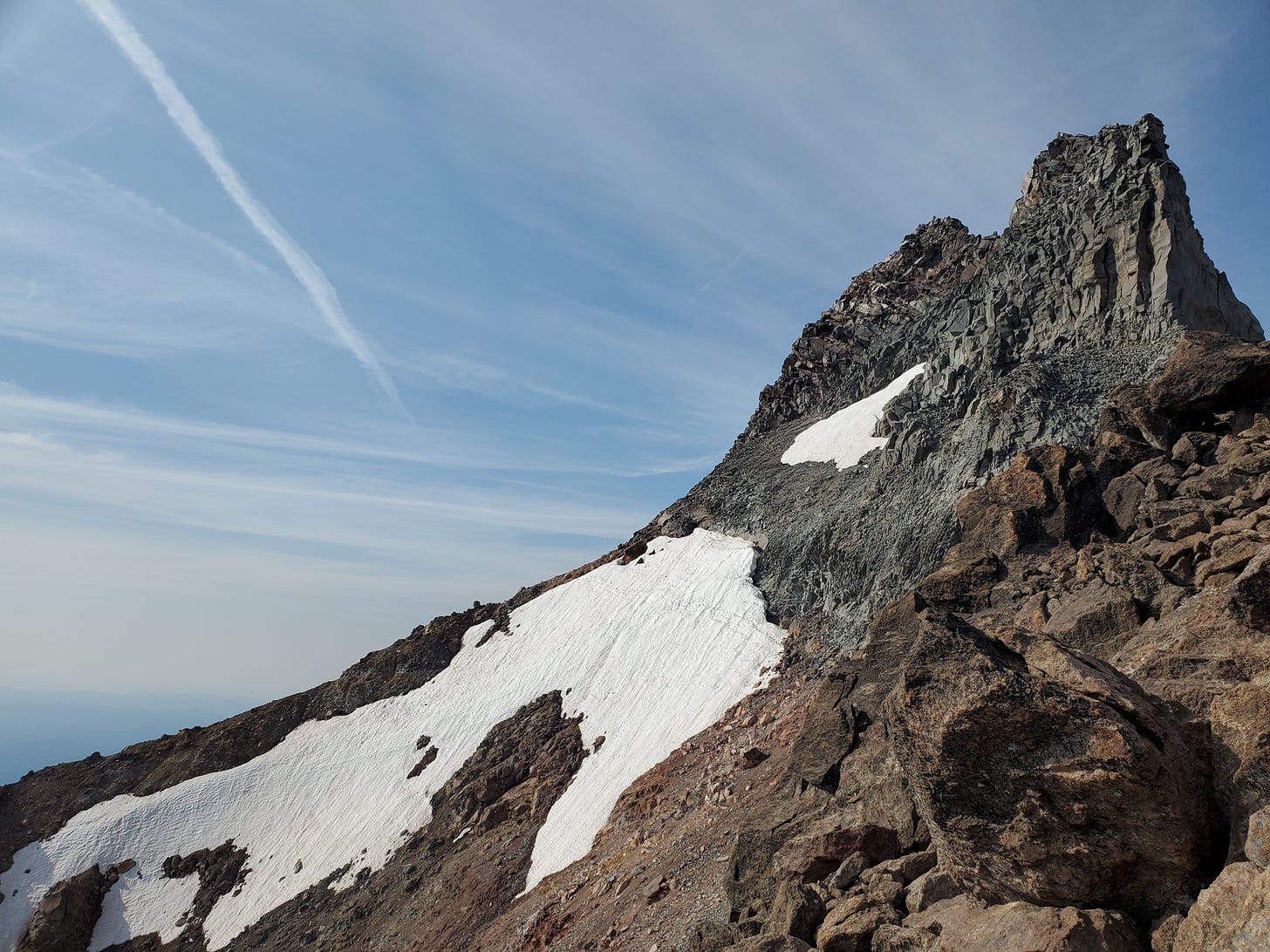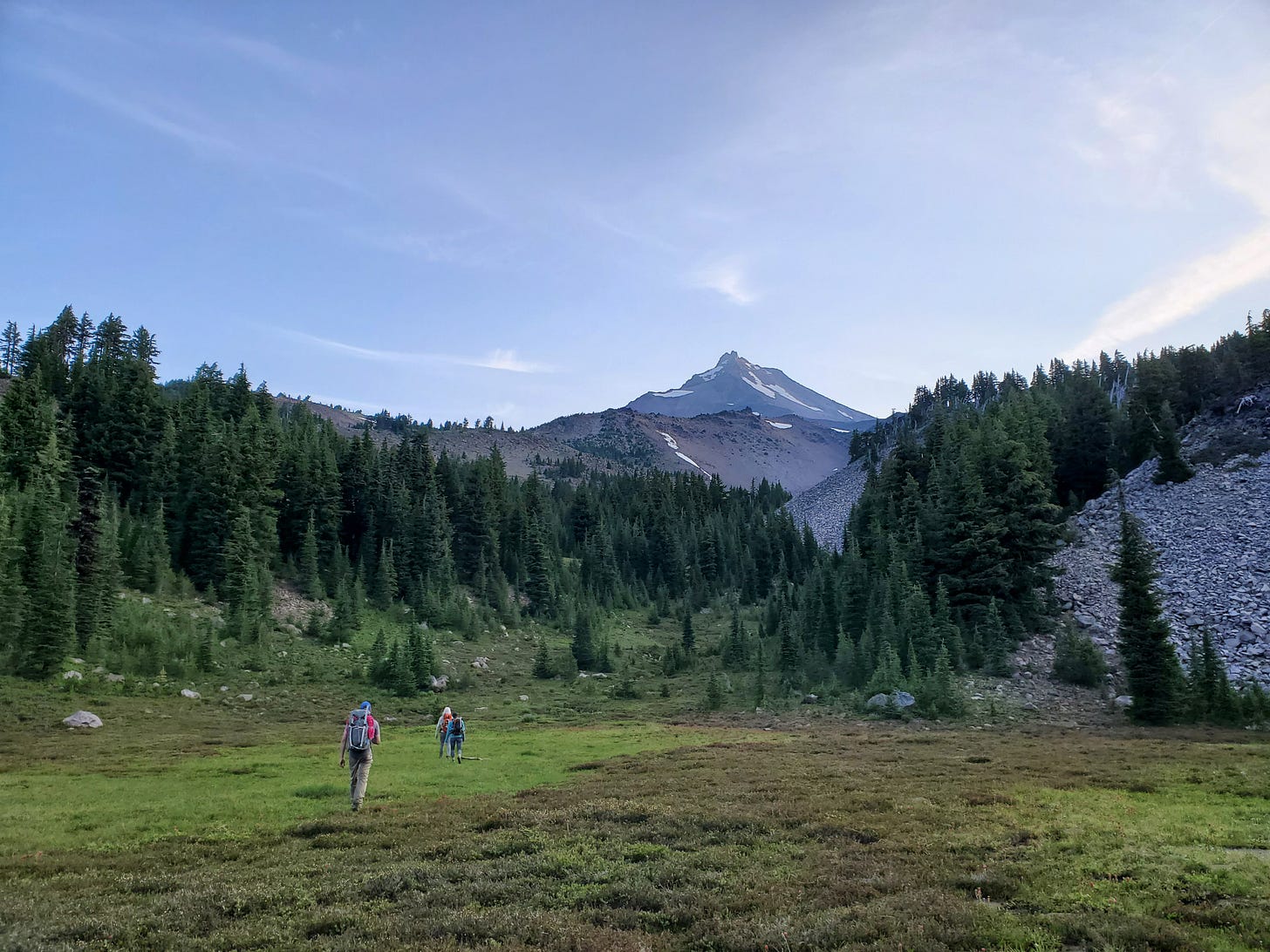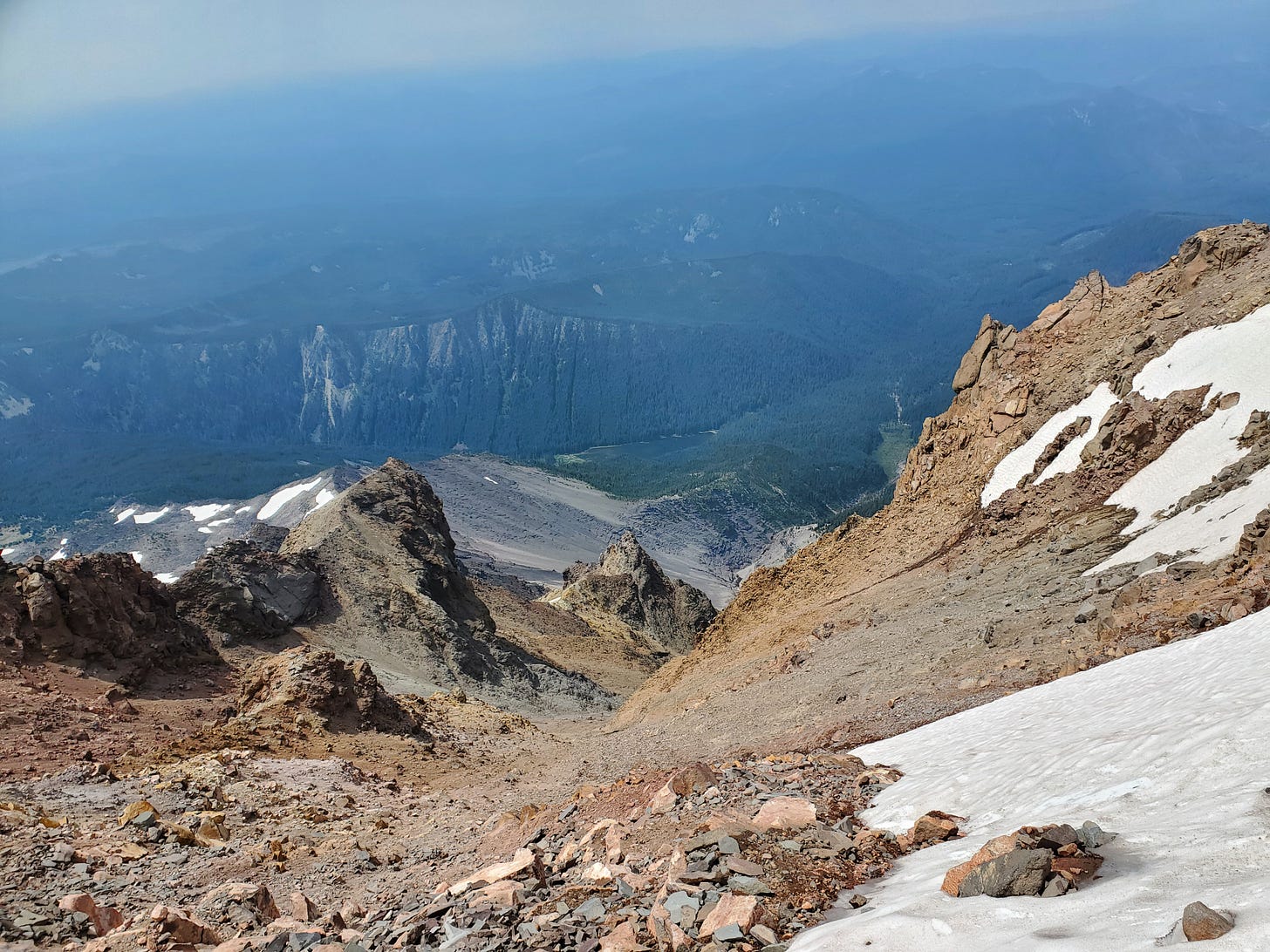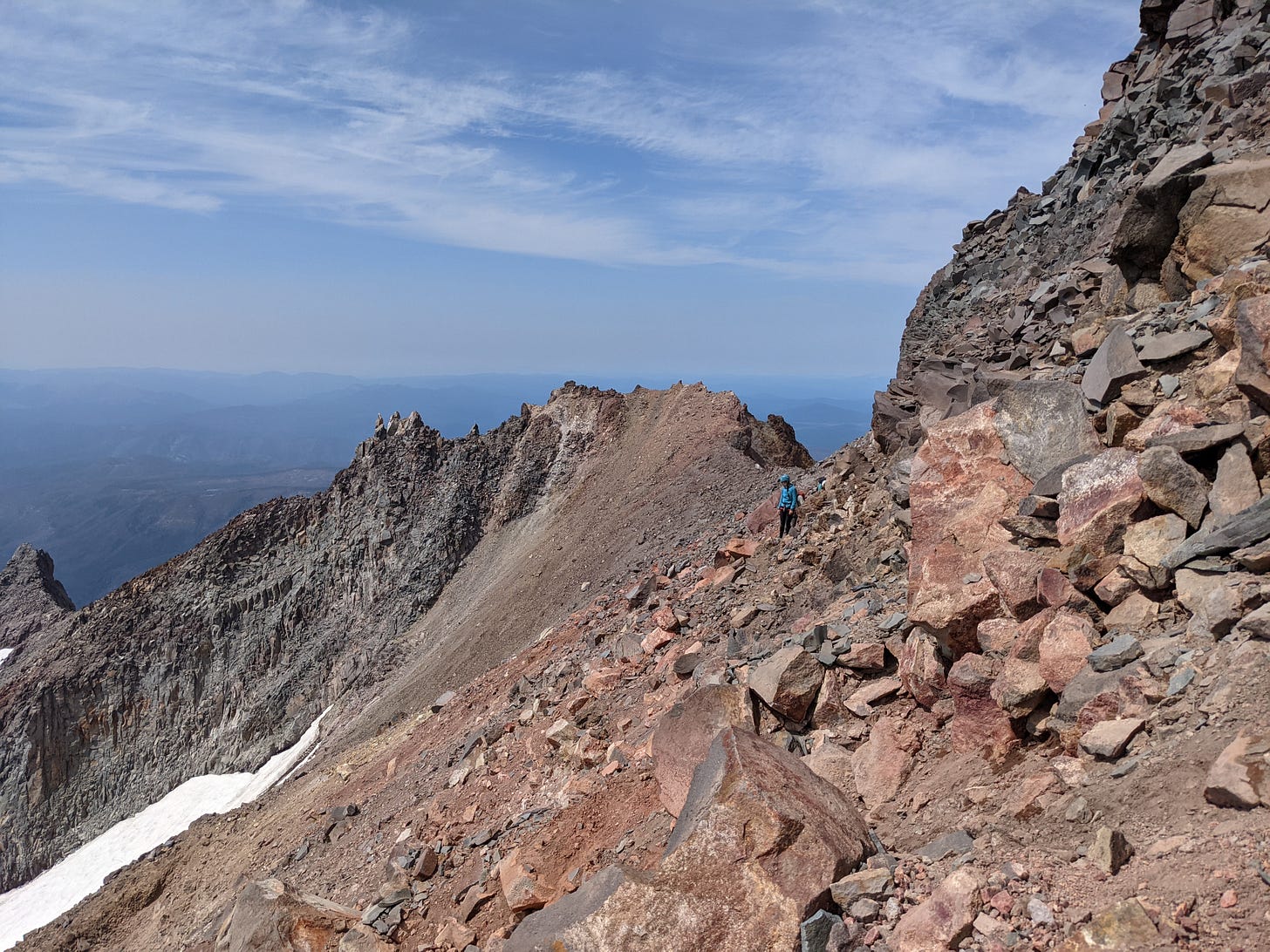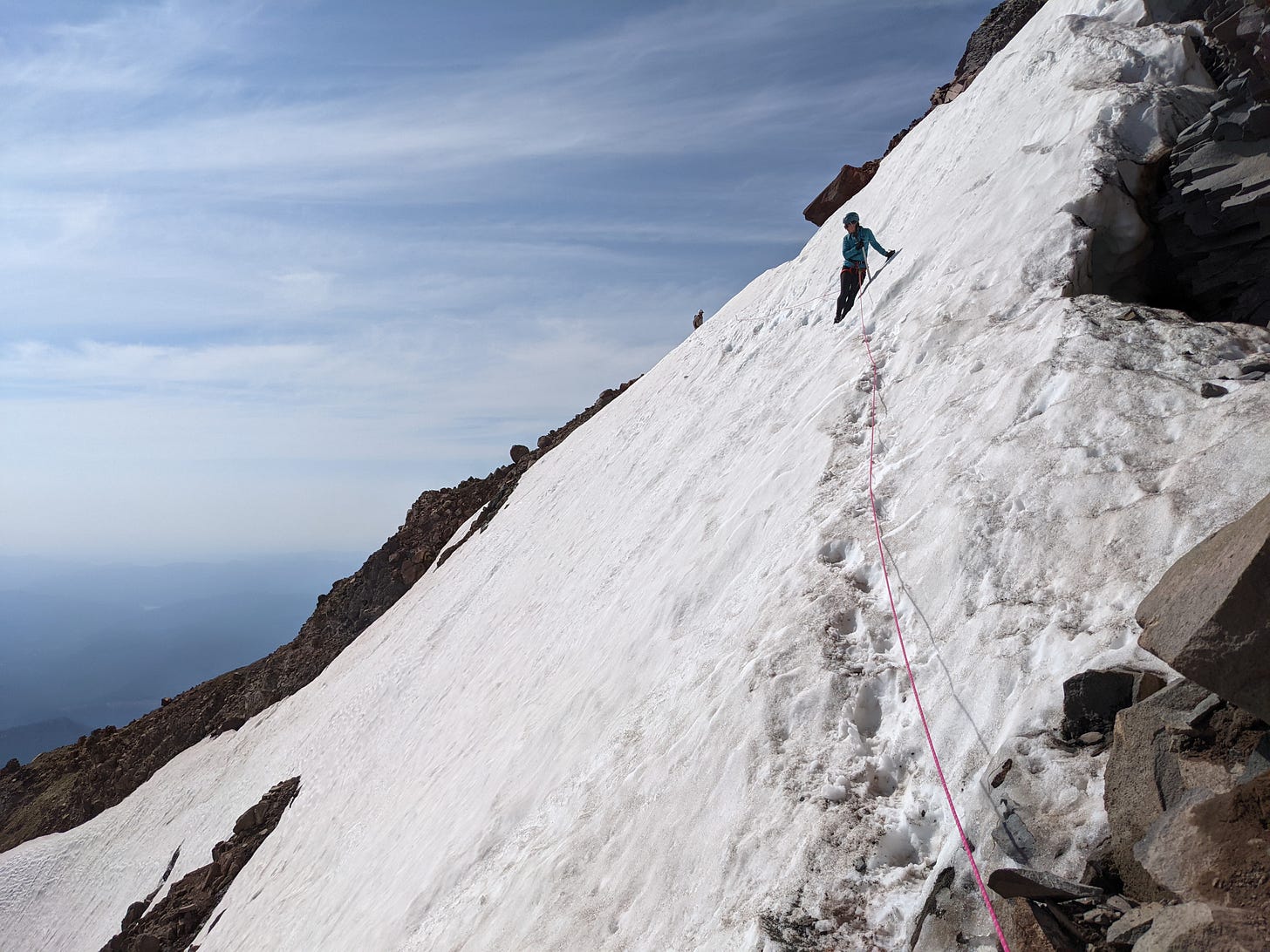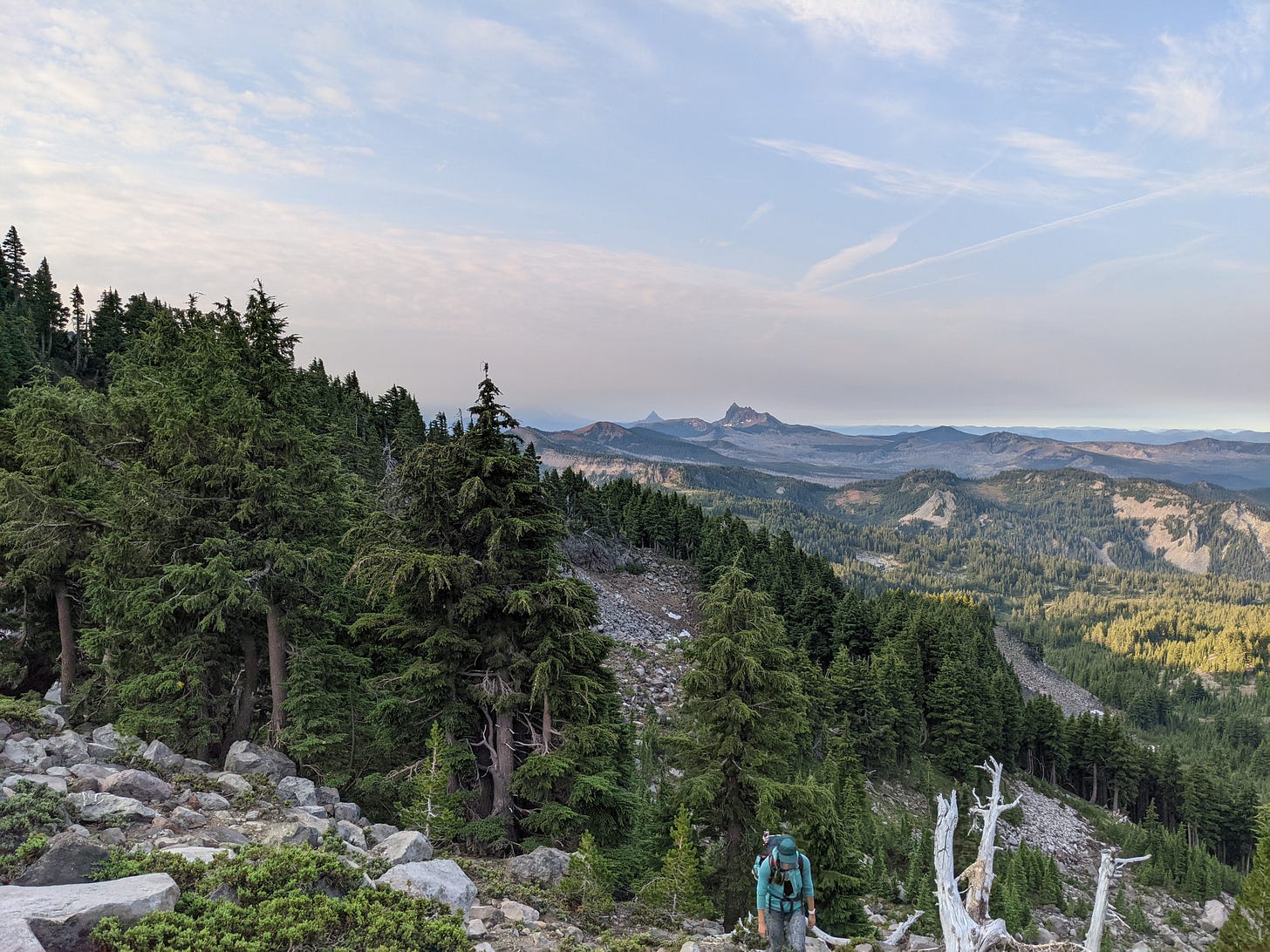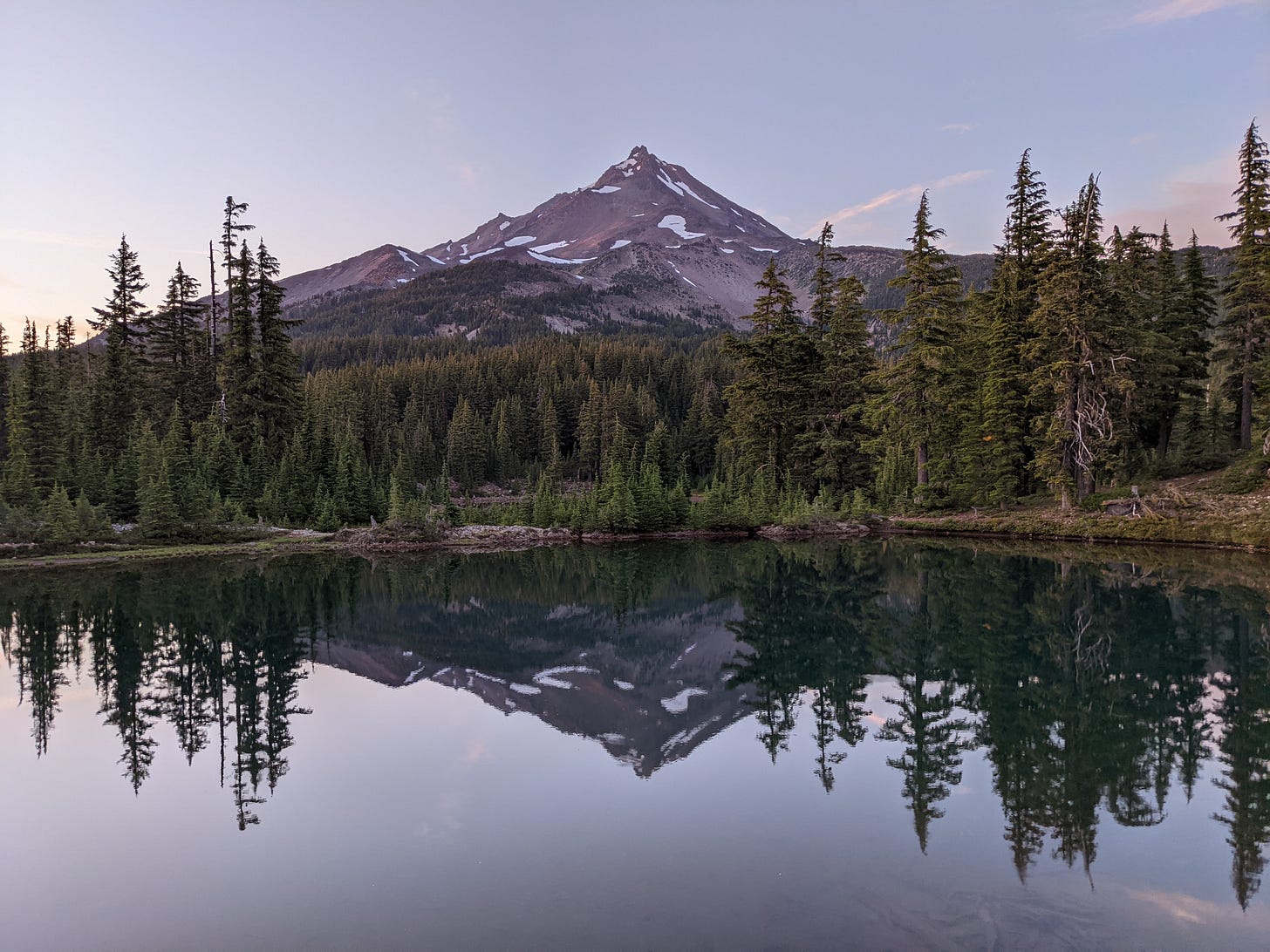I grabbed onto the hull of a boulder and yanked my body over the edge. I heard the distinct drumming of a helicopter pounding through the quiet wilderness.
I searched the hazy sky for the aircraft. I couldn’t see where it was flying – but I knew what it was looking for.
A climber had fallen from the top of Mount Jefferson just a few days before we were attempting our own climb up the 10,500’ volcano – and he was still missing. His climbing partner had lost sight of him after he fell hundreds of feet and disappeared over an icy ledge. Search and rescue crews were combing the massive mountain for any sign of him.
I scanned the terrain around me. We were thousands of feet up the south ridge of the mountain. The landscape that surrounded us was remote and rugged. It was an endless sea of volcanic boulders and icy snowfields and jagged alpine cliffs.
When I looked up at where we were going, my palms pooled with sweat. The climb got steeper and more consequential with every step up the mountain.
Mount Jefferson has a well-earned reputation as being one of the most difficult climbs in Oregon. The top of the volcano is a steep pile of unreliable rock and scree that unravels into a dangerous abyss. Climbers have to traverse loose footing and crumbling holds, perched just feet away from cliffs that plummet onto glacial ice, hardened snow, rushing water, and jagged ravines. When you look out from the uppermost ledges, it is hard to imagine how anyone could ever survive a fall. When you are on it, it is easy to imagine how something could go wrong.
Steve Van Pelt’s fall was certainly not the first on Mount Jefferson and it’s far from the first mountain that I’ve climbed that has seen loss of life.
The calculation and reality of risk is a core part of mountaineering – as is the fact that, despite your best preparedness, the worst-case scenario could still happen. It’s not all that different from life, in that way.
It’s something I think about a lot with these riskier treks into the mountains.
But this felt different. This felt closer. I’d never met Steve or his climbing partner or any of his loved ones, but I felt the pain of his fall from the moment we started climbing. And an acute awareness that he could be any of us.
A somber fog hung overhead all day. Reminders of the accident swarmed around us as helicopters circled the mountain and search and rescue crews hiked up the ridge behind us, bellowing his name into drainages – and hearing nothing but a haunting silence in return.
And whispers of his life swirled around our climb up the mountain.
As I hiked the PCT to our campsite on Sunday evening, I looked down at the dusty trail and wondered if the footprints in the soil belonged to Steve. The tread still so fresh on the trail, you could make out each ridge and ravine of the shoe.
As we climbed higher up the mountain, I wondered if our hands had grabbed the same boulders. Or if our feet had sunk into the same sand. I wondered what he thought when he crested the ridge and looked out over the harsh slope below. A mix of awe and fear and grief washed over me when I stopped and took it all in.
Our group reached the saddle just below the summit and started traveling across the most consequential terrain on the mountain. We strapped on harnesses and crampons and gripped our ice tools to cross a steep snowfield and then we started picking our way across the final traverse to the summit – the same traverse where Steve fell.
There are moments when the fragility of life sucks the breath out of me. Driving past a fatal accident on the interstate. Watching cancer take my 66-year-old mother and 36-year-old sister-in-law within months of each other. The fact that they got sick will never make sense to me.
As I looked down the drainage of Steve’s fall, I felt that hard reality wallop me again.
It made no sense that he could be gone before his footprints faded from the dusty trail. That he walked in full of life and excitement to climb this mountain and never walked out. That his loved ones were blindsided by an abrupt end to their time together.
And the forces that decide unexpected loss of life can be so random. A disease that made its home in one body but not another. A toe that catches on one rock over a cliff that another misses. Hairline fractures of chance that can separate life from death.
I am often aware of my own mortality when I’m in the mountains. I know there is so much that can go wrong. Bad falls, bad weather, bad luck.
But as my hand was scratched raw from clutching the rough rock and clawing at loose sand, the awareness of how little separated me from death was more visceral. I felt like I could feel the razor’s edge of my last breath each time I searched for my next step and my next hold, knowing how little was keeping my body on the mountain. Knowing how little was keeping me alive.
It was impossible to shake the thought of Steve’s fall from my head, and it made me tremble with how close I could be to my own. I wasn’t sure I could keep going through such emotional fear.
After my mom’s diagnosis, I felt the temptation to shelter myself from all of the pain of the world. I wanted to dig a hole in the bottom of my closet and stay there forever.
But my mom set such a beautiful example of how to continue to live with joy through the fear of death. While she felt every hard emotion of a life-threatening illness, she also chose to keep living in the same wholehearted way that she always had. The week she found out her chemotherapy was unsuccessful, she went for a bike ride along Lake Champlain. If you passed her on the path that day, the first thing you would have noticed was her smile.
My mom coaxed me out of my closet cave and showed me how to keep going through the fear of loss.
And I know I will always find ways to live a richer life because I watched her do exactly that, through the gravest part of her own. And while the hardest losses of my life have made me more aware of how death can blindside any of us, they’ve also encouraged me to keep living as hard as I can through that hard reality. Because of that hard reality.
As I kept moving over the traverse on the top of Mount Jefferson, the fear and the grief kept mounting inside me. The cliffs below taunted me. The thought of Steve moving along this same ground drummed through every shaky step.
And then I paused just below a ledge and froze in the face of the next move. The grief and the fear were too heavy to go on. I could not take the next step. It felt closer to death than I could bear. Both my own and Steve’s.
“I don’t think I can keep going,” I announced to my climbing partners. My voice cracked with the emotion and pain that had been building inside me since we left the trailhead.
One of my friends stopped with me. The other two kept going, fully understanding why we could not.
I retreated until I found a stable place to sit. And I sat there while my friends continued to trace Steve’s footsteps up to the highest rock on the mountain.
I looked over the ledge and thought about this climber I’d never met – but felt so close to. And felt so much grief for.
I have no doubt that we shared some of the same mental journeys that we make in the mountains. The calculation of risk, the presence of fear, the decision to still travel in these environments, that can be so hostile and unforgiving and terrifying. I choose to do it because these places are also where I feel the most alive, where I feel so much joy and gratitude for this life, where I grow into a stronger, bolder, braver, better version of myself.
I’m sure Steve thought about risks. And I’m sure that he had reasons to still climb.
On Monday, I stopped because it wasn’t a day where I had the headspace to handle the risk. Where I was feeling too much grief for Steve, and his climbing partner, and his loved ones. Too much fear of loss.
But on another day, I hope I’ll do exactly what Steve did, and exactly what my mom did, and keep going through the fear of the worst that can happen. Maybe not on Mount Jefferson, but on other mountains, and throughout my life below.
I know I’ll continue to hold this loss close. It will be another hard reminder of how loss can blindside any of us at any time, and another reminder that while we are powerless to fully protect ourselves from the possibility of unexpected, unthinkable, unimaginable loss, we do get to choose to keep living.
If you dig Trail Mix or a story resonates with you or makes you laugh or cry or laugh-cry and you want to say “hey thanks for typing these words and sharing them on the internet,” you can buy me a coffee (or beer). I can’t thank you enough for supporting this storyletter.
I would love if you would consider supporting Trail Mix with a regular coffee or beer through one of the monthly membership options. Your support allows me to take time to write and share these stories every week. And your ongoing support will help Trail Mix keep going and going.
Endless thanks for supporting Trail Mix in whatever way you can - through coffees and beers, and letting it land in your inbox, and sending notes and sharing it with friends. I am so grateful for any and all of your support.
You can share Trail Mix with friends (real life or internet ones). (Link to webpage here!) You can also send me notes about Trail Mix-y things through email, comments, instagram or twitter.
Trail Mix is a weekly newsletter full of stories about running and life, dispatches from the wilderness, and essays about how it all collides. You can subscribe to Trail Mix for more stories in your inbox.





